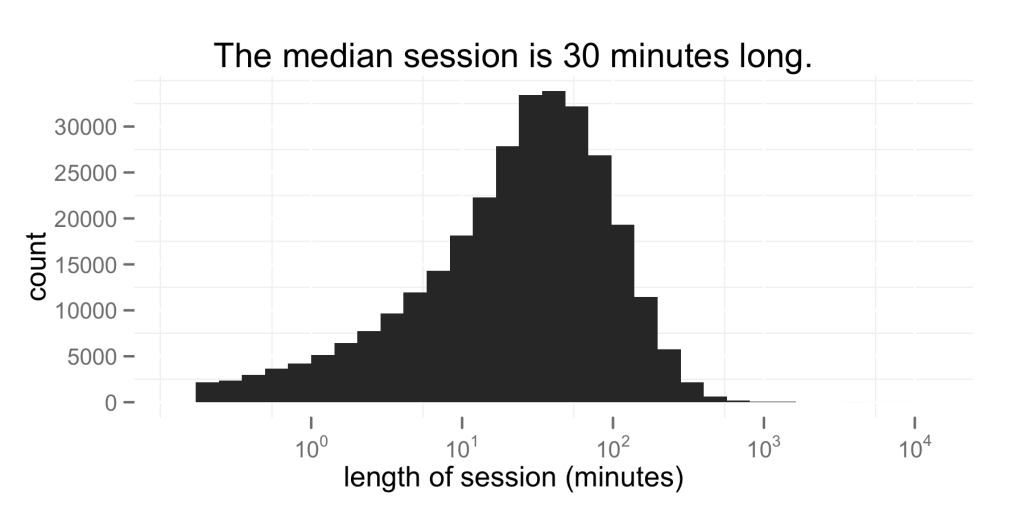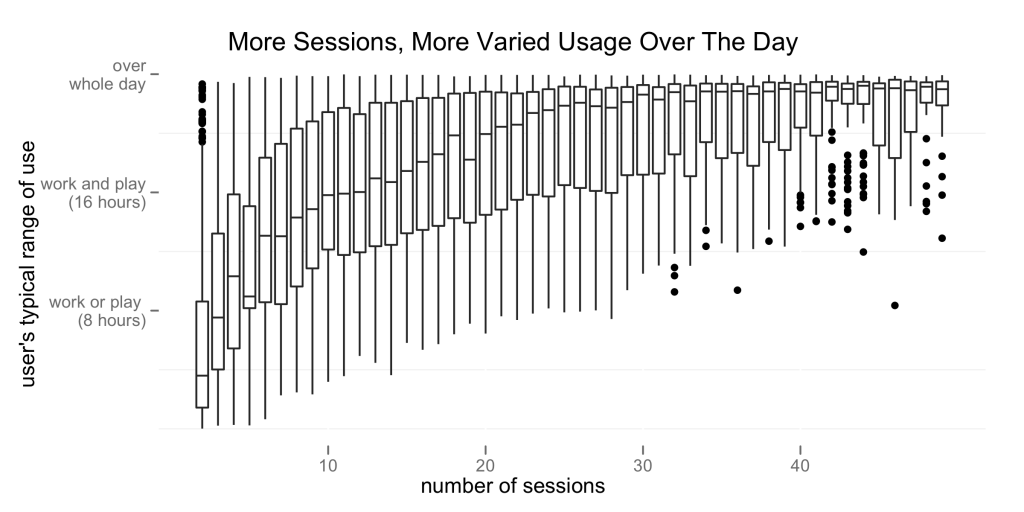We recently provided some simple insights we’ve gleaned from how people use private browsing. In this post we’ll take a higher view, and examine behavior regarding when people generally use their browser.
The tl;dr version: users who have more “sessions” (defined below) tend to browse longer, more diversely, and over a broader swath of the day than more casual users.
Preliminaries
Before we begin, the unit of analysis is the “browser session.” Here is our working definition: a browser session is a continuous period of user activity in the browser, where successive events are separated by no more than 30 minutes.
Despite its rudimentary nature, this definition of a session is still fairly common in the web analytics literature.
The median browser session, median number of sessions
As the graph indicates, the median session is only about 30 minutes long, with a very long tail. The first quartile is about 9 minutes long, while the third is about an hour.
The median number of sessions per user, on the other hand, is about 2 a day. Approximately 25% of users actively use the browser only once a day, while the 75th percentile has around 3 sessions a day.
More sessions ↔ longer sessions
Those users with a larger amount of sessions (say, 20 over the week-long study) tend to spend about 10 minutes more per session than those with around 10 sessions.
More sessions ↔ more varied session lengths
Users with more sessions also tend to have much larger variation in the lengths of their sessions, which suggests that for more frequent users, the use case of the browser is in general much more diverse.
More sessions ↔ wider range of use over the day
More frequent users tend to use the browser over a wider swath of the day as well. This is fairly intuitive – more and longer sessions should span a larger part of the day. It is striking, however, how large the range is for users with many sessions. This might be a consequence of the sample bias inherent in the Beta population. Most of our Test Pilot users are tech-savvy young men, so the wide range in which they browse is a little more understandable.
As you can tell there is a lot we can do with just analyzing sessions. We’ll be rolling out more simple insights like these soon – stick around.




Axel Hecht wrote on
:
wrote on
:
marry wrote on
:
wrote on
:
SpazzMarticus wrote on
:
wrote on
:
Utkarsh wrote on
:
wrote on
: